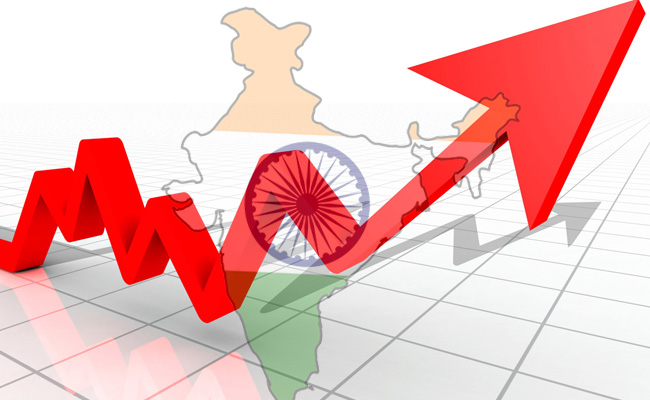The Survey, tabled in the Parliament on Tuesday, also forecast a growth range of 6% to 6.8% for the next fiscal year.
Despite slowing growth, India will still be the fastest-growing major economy in the world in FY24, supported by “solid” domestic demand and a pick-up in capital investment amid lingering external economic and political risks, according to the first Economic Survey prepared by a team led by chief economic adviser V. Anantha Nageswaran, who took charge last year.
It pointed out that incipient signs of a new private sector capital formation cycle are visible, aided by the healthy financials of India Inc.
However, the Survey cautioned that the challenge on account of rupee depreciation persisted amid the likelihood of further increases in policy rates by the US Federal Reserve and also flagged that the widening of the current account deficit (CAD) may continue as global commodity prices remain elevated.
The economy is estimated to expand by 7% in the current fiscal compared with 8.7% in 2021-22, according to advance estimates released by the National Statistical Office (NSO) earlier this month.
The Survey expects the Indian economy to grow faster in the coming decade once the global shocks of the pandemic and the Russia-Ukraine conflict, causing a spike in commodity prices, settle.
“The medium-term prospects of the economy look good because of cleaned-up balance sheets and reforms are going to have a lag payback. The Survey projects growth will be 6.5% for the next fiscal and range between 6% and 6.8%. The range seems asymmetric in nature and looks deliberate, but we must understand that the global political and economic environment has uncertainties, and we also do not know at what speed the global economy recovers,” Nageswaran told reporters after the report was presented in Parliament.
“A moderate to somewhat significant global economic slowdown will be, on balance, a better outcome for India as it would lead global commodity prices to fall, prevent tightening of interest rate in the developed world and weaken the dollar. Therefore, to ensure that we fully accommodate the downside risk, the band for growth is larger,” he added.
The Economic Survey comes a day before the announcement of the Union budget when finance minister Nirmala Sitharaman will attempt to insulate the economy from external headwinds and propel growth while sticking to the fiscal consolidation path.
India’s “brisk” economic growth in FY24 would be led by a vigorous credit disbursal and pick-up of private capital investment cycle, with the strengthening of the balance sheets of the corporate and banking sectors, according to the Survey.
Further support for economic growth will come from expanding public digital platforms and path-breaking measures such as PM GatiShakti, the National Logistics Policy, and the production-linked incentive schemes to boost manufacturing output.
“India’s improved balance sheets and digital infrastructure together will add anywhere between 50-100 basis points to India’s potential GDP growth, which is what we were missing in the second decade of the millennium,” the CEA said.
The Survey offered indications to the government about policy issues requiring its attention, including the current account deficit and inflation.
“The CAD needs to be closely monitored as the growth momentum of the current year spills over into the next…The widening of the CAD may also continue as global commodity prices remain elevated…The challenge of the depreciating rupee, although better performing than most other currencies, persists with the likelihood of further increases in policy rates by the US Fed,” it said.
India’s current account deficit widened to a nine-year high of 4.4% of GDP in the second quarter because of a higher trade deficit, reflecting the impact of slowing global demand on exports.
The report also pointed out that the shrinking of the global market due to slowing world growth and trade could result in a further loss of export stimulus for India.
While the Survey took note of India’s inflation management, “which can be contrasted with advanced economies that are still grappling with sticky inflation rates”, it expected monetary and fiscal authorities to be “as proactive and vigilant as they have been this year.”
It said that while the inflation challenge in FY24 would be a “lot less stiff” than it has been in the current fiscal, the upside risks to inflation would outweigh the downside risks.
“For instance, the re-emergence of covid-19 in China can trigger supply chain disruptions, as was the case during the pandemic period. On the other hand, if China returns to normalcy from covid-19, there can be a surge in commodity demand—thus reversing the recent slump in commodity prices. Further, the probability of a soft landing in the US economy has risen in recent months, and that might keep up the US demand for oil. Similarly, the geopolitics associated with oil can particularly affect our imported inflation,” said the 414-page Survey report.
It added that with the climate across the world becoming increasingly erratic, it is further fortifying upside risks to food prices. “A lot depends on industrial input prices: they may ease, but on the flip side, their delayed pass-through to consumer prices may contribute to the stickiness of core inflation,” it said. India’s retail inflation moderated to within the Reserve Bank of India’s tolerance band of 2-6% for the second straight month in December, even as core inflation remains sticky.








